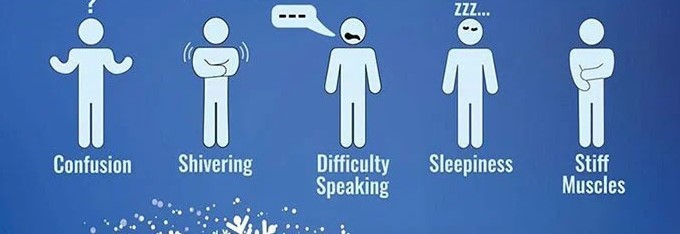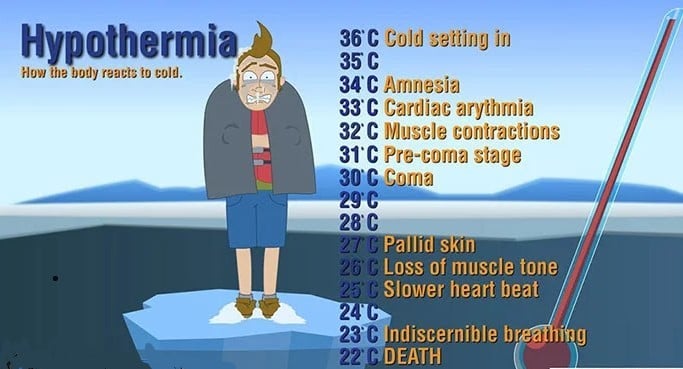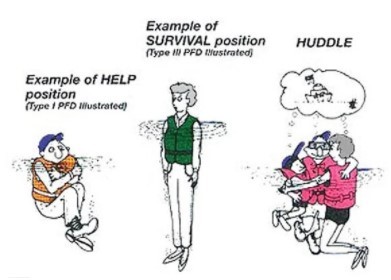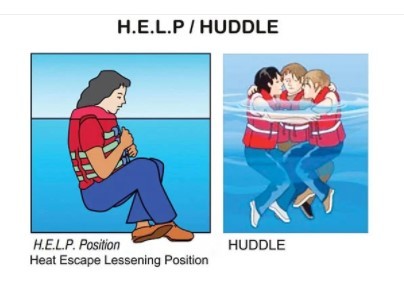What is hypothermia?
One of the things that can happen to you while canyoning, caving and vai ferrata/mountain climbing is hypothermia. So it is better to know more about it:
Hypothermia is a medical emergency that occurs when your body temperature drops from 37°C (98.6 degrees Fahrenheit) to below 35°C (95°F).
Lowering body temperature to 32°C (89.6°F) or less can be fatal. This condition can be caused by prolonged exposure to temperatures below 10°C (50°F), or by prolonged immersion in cold water below 20°C (68°F).
If left untreated, hypothermia can eventually lead to complete heart and respiratory failure and ultimately death.
In which cases can you get hypothermia?
You can get hypothermia if you are exposed to prolonged cold, outdoors or in a very cold environment.
You are at greater risk if you are elderly or very young, or are underweight or in poor health.
Babies can also develop hypothermia by sleeping in a cold room. The temperature regulation is disturbed in the elderly and makes the elderly susceptible to hypothermia. Older people and very young children are at risk for hypothermia even in the summer heat, even when exposed to excessive air conditioning.
Hypothermia can make you sleepy, confused, and clumsy. Because hypothermia occurs gradually and affects your mind, you may not realize you need help, which makes hypothermia even more dangerous.
A body temperature below 35°C (95°F) is a medical emergency and can lead to death if not treated in time.
The overall death rate from hypothermia is almost the same between men and women.
But because men are more exposed, men are responsible for 65% of hypothermia-related deaths.
Despite the large temperature difference outside your body, your body is well adapted to work in a temperature range inside the body. The body temperature in the "neutral heat zone" is perfectly regulated between 36.5 and 37.5 ° C, outside it usually the temperature-regulating reactions are activated. You have several mechanisms — such as adjusting the size of small blood vessels and chills — to help you maintain a healthy body temperature.
But the elderly and young children are sensitive to the effects of temperature changes outside.
Hypothalamus regulates heat by increasing heat conservation (vascular contraction and environmental behavior) and heat production (shaking and increasing thyroxine and epinephrine levels). Changes in the central nervous system can disrupt these mechanisms. The cold threshold is 1 degree lower than vasoconstriction and is viewed by the body as the last mechanism to maintain temperature. The body maintains a stable core temperature by balancing heat production and heat loss.
At rest, people produce 40-60 kcal of heat per square meter of body surface area through production through cellular metabolism, which puts the greatest strain on the liver and heart. Heat production increases with muscle contraction. Shivering increases heat production. Heat retention mechanisms may increase under cold stress and core temperature may decrease after fatigue or glycogen depletion.
When your body temperature is above this range, your body functions poorly and can cause health problems such as heart attack, kidney, liver damage or worse.
Hypothermia reduces the depolarization of heartbeat cells and causes bradycardia (slower than normal heart rate ~ less than 60 beats per minute). Atrial and ventricular arrhythmias can be caused by hypothermia.
Asystole and ventricular fibrillation begin spontaneously at a core temperature below 28-25°C.
Hypothermia gradually collapses the central nervous system (CNS) and linearly decreases CNS metabolism as core temperature falls. At a core temperature of less than 33 degrees Celsius, the electrical activity of the brain becomes abnormal. Between 19 and 20°C, an electroencephalogram (EEG) can correspond to brain death. Tissues have a lower oxygen consumption at low temperatures. It is not known whether this is due to decreased metabolism at low temperatures or increased desire for hemoglobin for oxygen associated with decreased oxygen supply to hypothermic tissues.
When the cold affects your body, you may have trouble thinking, speaking, or moving properly. You may not realize what is going on, or you may not be able to warm up or ask for help.
Signs and Symptoms of Hypothermia
3 phase of hypothermia: mild, moderate and severe.
In practice, it is important to recognize the first signs of hypothermia before it becomes severe.
The most common symptoms (in order of occurrence):

- Shake
- Fatigue and impaired judgment
- Clumsiness / Loss of Skill
- speech disorder
- conduct disorder
Early signs of hypothermia:
- Cold hands and feet
- Swollen or puffy face
- Pale skin
- Shivering (in some cases, a person with hypothermia does not shiver)
- Speak more slowly than natural speech or vague words
- It works sleepy
- being angry or confused
Other symptoms of hypothermia:
- Slow movement, difficulty walking or clumsiness
- Stiff movements of the arm or leg
- slow heart rate
- Slow and shallow breathing
- Blackening or loss of consciousness
Symptoms of hypothermia include fatigue, numbness of the skin (especially of the toes and fingers), chills, slurred speech, irrational or violent behavior, lethargy, slipping, dizziness, muscle cramps, and severe loss of energy. A person with some irrationality in behavior can be in the form of victims who claim to be hot and try to dress up.
What to do after the above factors have occurred:
- Try moving the person to a warmer place.
- Wrap the person in a blanket, towel or warm coat - whatever is convenient. Even your own body heat will help. Lie close to the person, but be calm.
- Give hot drinks, but avoid alcoholic or caffeinated drinks such as coffee.
- Do not massage the person's legs or arms.
- Do not try to warm the person with water.
- Do not use a heating pad.
Who is at risk for hypothermia?
Hypothermia can affect anyone, the people most at risk are:
- People over 75 years old
- Babies and young children - they lose heat faster than adults
- Excessive consumption of alcohol and drugs - their bodies lose heat faster
- People with poor blood circulation or diabetes.
- People with a chronic physical or mental disability.
- People with underlying infections.
- People who are very thin and have little body fat.
- People who work outside.
- People who are homeless.
- People who are in very humid environments.
What causes hypothermia?
Hypothermia occurs when your body loses heat faster than it produces heat.
If you stay in air below 50 degrees Fahrenheit (10 degrees Celsius) or in water below 68 degrees Fahrenheit (20 degrees Celsius) for a long time, you may experience hypothermia.
Some medical conditions can also predispose people to hypothermia. But if you don't dress properly or have the situation under control, prolonged exposure to an environment colder than your body can lead to hypothermia.
Risk Factors for Hypothermia
Risk factors for hypothermia include:
- Fatigue: Your tolerance to the cold decreases as you get tired.
- Old age: The body's ability to regulate temperature and feel cold can decline with age, and some older people may not be able to communicate with others when it's cold or move to a warm place when they're cold.
- Very young age: Children lose heat faster than adults. Children may also ignore the cold because they are too busy to think about it, and they may not be able to make the right decision about wearing warm clothes in cold weather.
- Mental health problems: People with mental illness, dementia, or other conditions that affect judgment may not be suitable for the weather or may not be aware of the risk of cold weather. People with dementia can wander away from home or get lost easily, leaving them trapped outside in cold or damp weather.
- Alcohol and drug use: Alcohol can warm your body from within, but it widens blood vessels, quickly dissipating heat from the skin. The body's natural response to chills is reduced in people who have consumed alcohol. In addition, the use of alcohol or energy drugs can influence your judgment about the need to help or wear warm clothing in cold weather. If a person gets drunk in cold weather and dies, he or she may have hypothermia.
- Certain medical conditions can also affect your body's ability to regulate body temperature.
Examples include hypothyroidism (hypothyroidism), malnutrition or anorexia nervosa, diabetes, stroke, severe osteoarthritis, Parkinson's disease, trauma, and spinal cord injury. - Medications: Some medications can alter the body's ability to regulate temperature. Examples include antidepressants, antipsychotics, analgesics, and pain relievers.
Prevention of hypothermia
- Follow some common sense tips you've probably all heard. Try to be more careful when wearing clothes in cold conditions. Choose the right clothes and wear them layer by layer, from the basics to the outerwear. If you expect to be exposed to wind, rain or cuts, wear a jacket with a waterproof and windproof outer layer.
- If you're outside/working in cold weather, or planning to travel, camp, or hike in the cold, you can reduce your risk of hypothermia by:
- Pay attention to weather forecasts and conditions
- Limit your time outdoors in the cold
- When you work outside, you need to plan your warm-up well
- Please wear warm clothing, including windproof jackets, gloves and hats. Dress in layers with synthetic fabrics such as polyester fleece or base layers.
- Avoid alcohol, caffeine and cigarettes, which can make you sensitive to cold
- Make sure your house is warm enough.
- Make sure to cover children's heads when they come out of the cold - children can lose heat faster than adults.
- Use socks, slippers and a hat to keep you warm at home.
- If it's cold outside, set your temperature to 68 degrees Fahrenheit (20 degrees Celsius) or higher. Lock off rooms you are not using to save on heating costs.
Cold water safety
Hypothermia can occur a few minutes after exposure to cold water, but symptoms generally develop gradually. When the water temperature is 40 degrees or lower, serious damage can occur within minutes. Even at water temperatures around 50 degrees, death can occur in the first hour of cold water immersion. While body fat, protective gear, and many other factors affect how long a person lives in cold water,
Here are some general guidelines for when hypothermia occurs in cold water:

It should be noted that water does not have to be very cold to cause hypothermia. Any water that is colder than normal body temperature will cause heat loss.
If you accidentally fall into cold water, the following tips can extend your survival time in cold water:

- Wear a compact and light weight aid or a life jacket. If you are going to be in the water or going for a swim for a long time, it is better to use a life jacket. A life jacket can help you survive in cold water by helping you float without the use of energy and by providing some insulation. Also attach a whistle to your life jacket as a sign of help.
- Get out of the water if possible. Get out of the water as much as possible, try to find a dry spot and stay out of the wind. In these cases, it is better to have a rescue blanket with you, which acts as insulation and prevents the wind from hitting you directly. Having an alcohol pill can also be essential, and your friends can help your body temperature return to normal faster by lighting a fire.
- Do not attempt to swim unless you are close to safety and a safe place. Or stay in place unless the boat, other person, or life jacket is near you. Swimming takes energy and can shorten survival time.
- Position your body to minimize heat loss. To reduce heat loss while waiting for help, use a body position known as a heat loss position (HELP). Keep your knees toward your chest to protect your body. If you are wearing a life jacket, your face will be down. Keeping your legs close together, bring your hands to your sides and your head back.
- Get together with others. If you are in cold water with other people, warm yourself up by looking at each other in a small circle.

- Do not take off your clothes when you are in the water, this will help insulate your body against water. Lift your buckles, buttons and clothes with a zipper. Cover your head if possible. Only remove clothing after you have safely stepped out of the water and you can take drying and heating measures.
To treat hypothermia, remove the victim from the wind or rain, remove wet clothing, and replace with warm, dry clothing. Give them hot liquids -- no alcohol -- and some energy-dense, quick-digesting foods. Do not massage hypothermia victims, but let them warm up gently. These are the first steps to prevent severe hypothermia.
Hypothermia can create an uncomfortable situation.
Several symptoms of severe hypothermia:
- Vibration stops.
- Mental functions are affected.
- (The person becomes irritable, anxious, or numb, has difficulty speaking, and slows down their response to external stimuli.)
- Inability to support, muscle weakness.
- Inability to see or concentrate.
- Forgetfulness, lethargy.
- Loss of consciousness, lack of response to external stimuli.
- It is difficult to detect breathing and heartbeat at this stage.
How To Treat Hypothermia:
- We can do everything to warm the "victim".
- Protect the person from the wind.
- Hot drinks and foods rich in carbohydrates.
- Non-alcoholic drinks and coffee. They amplify heat loss.
- Place the person on an insulation such as a mat or blanket to prevent the body from absorbing more moisture.
- If possible, remove wet clothes and wear dry clothes.
- If possible, place the person in a sleeping bag.
- Using a hot water bottle or any other bottle we have, we make hot water, wrap it in a cloth and place it under the armpits, in the sternum and in the groin.
- As we said before, we avoid massaging the hands and feet of a hypothermic person.
- If the person is semi-conscious or unconscious, we do not give him any fluids.
- We need to protect a person's head and neck from the cold and possible stone surfaces.
- We monitor a person's breathing and heart rate.
How to prevent hypothermia in canyoning?
- Always use the correct material.
- Eat regularly and drink plenty of fluids.
- Provide extra food during the cold days / winter months.
- Avoid carrying unnecessary burdens.
- Have read the canyon/valley map, route and entry and exit times.
- Know when to give up and use any emergency exits marked on the map and route.
- Take care of yourself and practice systematically.
- Good mental and psychological preparation.
- Try to keep your body warm as much as possible
Finally, it must be said that canyoning is one of the best water sports! You can experience great moments of fun, joy, excitement and adventure with your friends.
You just have to master all the technical aspects and not underestimate the power of nature.
It is also good to know that hypothermia in the canyons/valleys cannot be prevented by wearing only warm clothes.
Proper nutrition, hydration and adaptation of the body to low temperatures are just as important as wearing and using warm clothing and high-tech equipment. Try to eat foods with simple sugars and drink plenty of fluids.
Taken from: Narges Najafi
You can share the above article with your friends via social networks.
If you also have experience with hypothermia, tell us
Overview Knowledge base Technical terms for canyoning and caving: Go back


